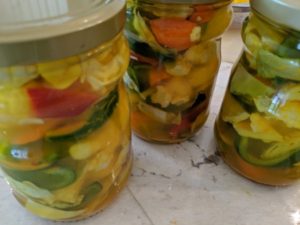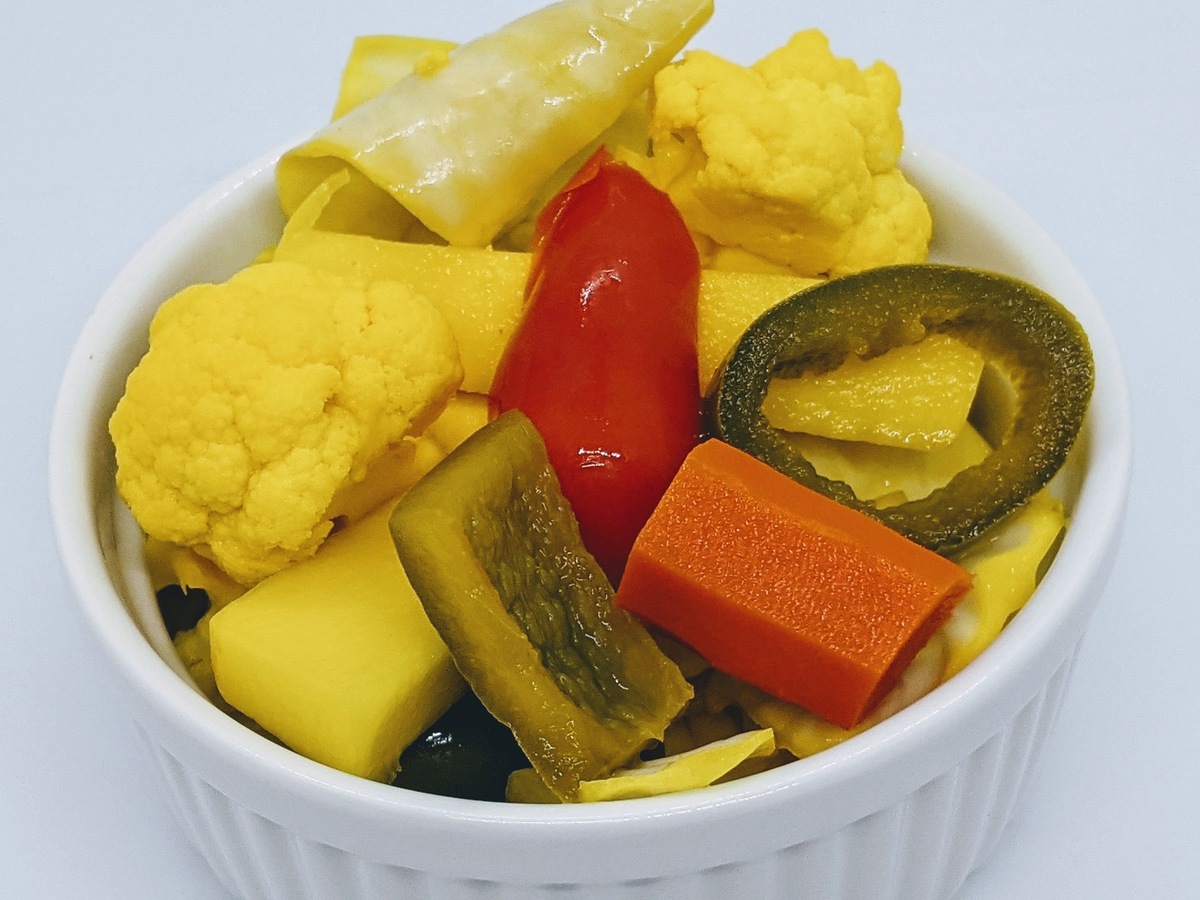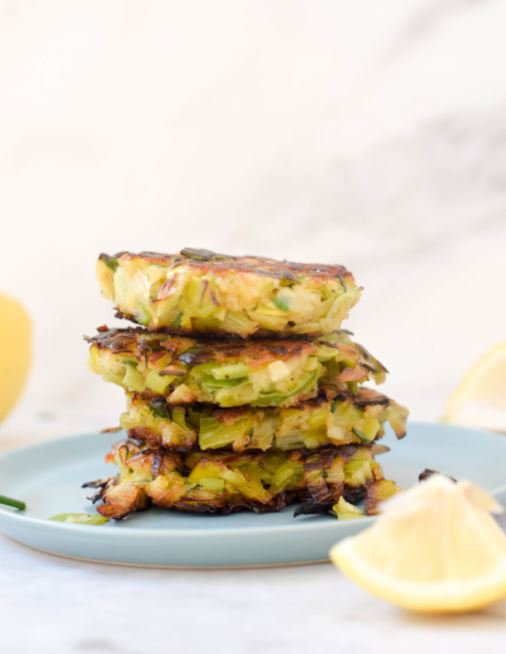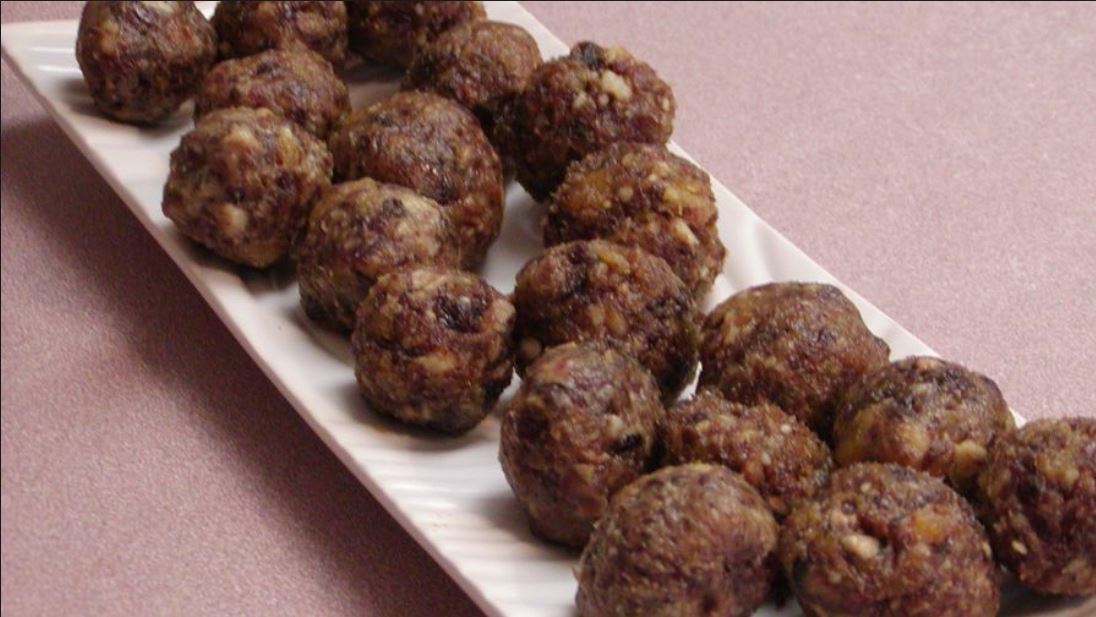Israeli Pickled Vegetables
Israeli Pickled Vegetables (Hamutzim – the Hebrew plural for “sour”) are a staple at lunch, dinner or for a snack. In South Florida, where I reside, almost every Israeli or Shawarma restaurant provides pickled vegetables or has a pickled vegetable bar.
Pickled vegetables are versatile. We serve them as an appetizer or a side dish. They are great in between meals to help satisfy cravings. Their colorfulness also makes them a great filler on charcuterie boards.
History of Pickling
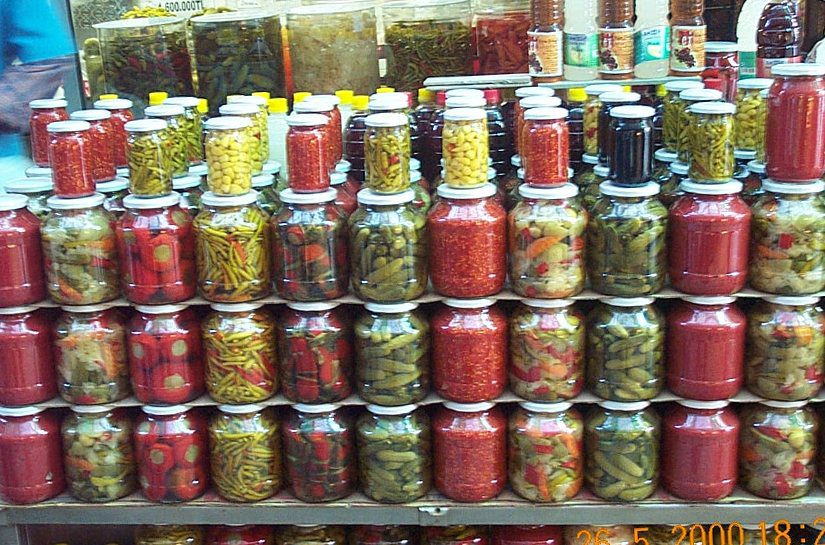
Pickling likely first originated in ancient Mesopotamia around 2400 BCE. According to archaeological evidence, cucumbers have been know to be pickled in the Tigris Valley of Iraq in 2030 BCE.
The process of pickling was invented to preserve foods. This came in handy for sailors on long journeys, before the steam engine was invented. It also was a way to preserve vegetables throughout the winter months or off-season.
Pickled Vegetables Health Benefits

There are health benefits to pickled vegetables too. According to WebMD, eating pickles can provide the following benefits:
- 23% of the daily recommended amount of vitamin K, which helps your blood clot and keeps your bones strong
- 21%-24% of the daily value for vitamin A, important for your vision, immune system, and a healthy pregnancy
- 7% of the calcium adults need for strong bones and teeth and healthy nerves
- 5% of your daily requirement of potassium, which helps your nerves work right
- 3%-4% of your daily requirement of vitamin C, an antioxidant that protects your cells from damage
Getting Pickled
Most countries use locally grown and available vegetables for their pickling.
For instance, in the US, we most commonly see pickled cucumbers, olives and sauerkraut.
Europe, on the other hand, has a multitude of varieties depending on region. Most consist of cabbage and root vegetables.
I read that Romanians stuff bell peppers with shredded cabbage and pickle them. Though not Romanian, I remember my paternal grandmother making these and canning them in a sweet and sour brine. They grew their own vegetables and pickled many to use in the winter months.
In Asian countries such as the Philippines, Singapore, Indonesia and Malaysia pickled vegetables include cucumber, carrot, bird’s eye chilies, and shallots. They also pickle papaya and pineapple.
In Mideastern countries (Israel, Iran, Turkey and many Arab countries) they pickle turnips, peppers, carrots, green olives, cucumbers, cabbage, green tomatoes, lemons, and cauliflower.
Most countries around the world use vinegar or salt to pickle (or ferment) their vegetables. Most countries that grow lemons use them for pickling. They don’t just use the lemon juice, but the lemon too – rind and all. This is common practice in Israel, Italy and Arab countries around the Mediterranean basin.
Making Israeli Pickled Vegetables
The most common combination of Israeli pickled vegetables are cabbage, cauliflower, carrots, peppers and turnips. You can add radishes (though they lose their color) as well as celery. Spices can vary too to include bay leaf, sugar, coriander and others. However, it comes down to personal taste and preference. There is no wrong way and I suggest you experiment with your own vegetables and spices.





The ROI (return on investment) of the time it takes to make pickled vegetables compared as to the time you will enjoy them is extremely high. Meaning, for the 30 minutes it takes to chop the vegetables and boil the brine, you will get days of delicious snacking with a crunchy, tangy bite.
Start by cleaning, peeling and separating the vegetables. Mix the raw vegetables in a large bowl then place them into jar(s). Pack them tightly.
Next, bring the water to a boil. Remove from the stove and add the vinegar, lemon juice, salt and turmeric. Stir until the salt dissolves. Taste it. You should taste the salt but it shouldn’t be overwhelmingly salty. It should also have a good vinegar punch.
Carefully, pour the brine liquid into the jar to the top so that all the vegetables are submerged. Let the mixture cool, cover and then refrigerate for at least 24 hours before eating. The longer it sits, the better it tastes and the spicier it gets.
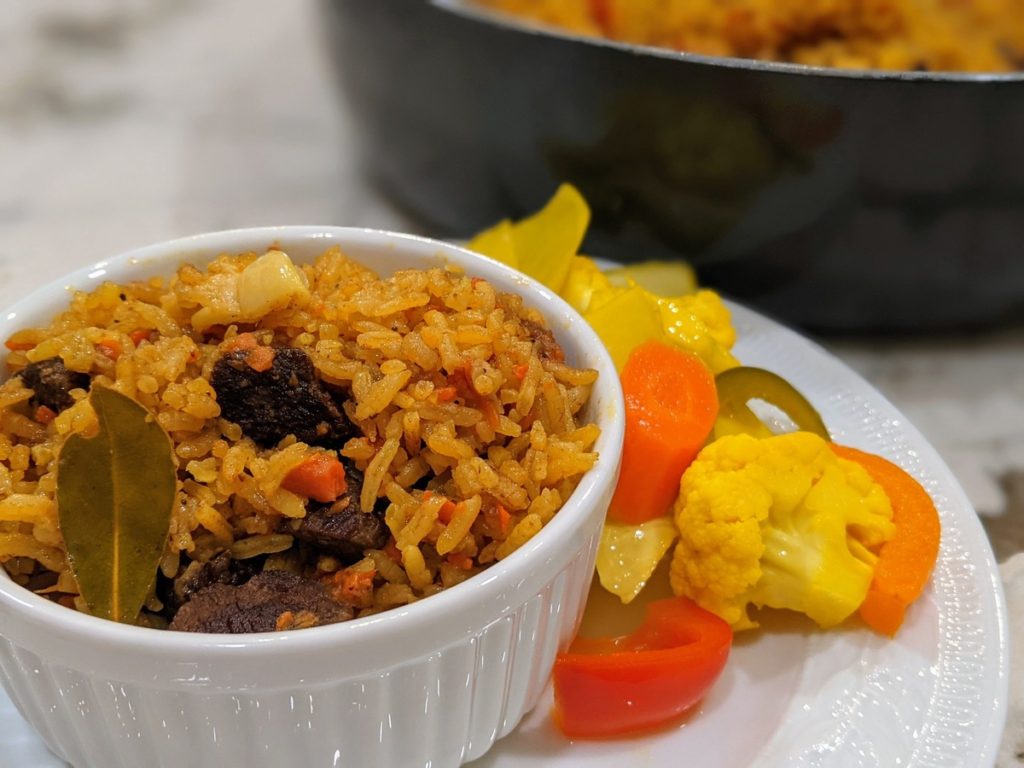
Serve the vegetables chilled by themselves, as a snack, an appetizer or a side like Uzbek Plov. However, it’s probably best as an accompaniment to a warm shawarma or falafel stuffed pita.
Bete’avon (bon apetit in Hebrew)!
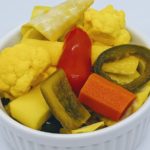
Israeli Pickled Vegetables
Equipment
- 2-3 Large glass jars
DESCRIPTION
INGREDIENTS
- 1 head cauliflower (cleaned and separated into florets)
- 5 carrots (peeled and sliced thin)
- 1 head cabbage (cut into 1-2" chunks)
- 2 turnips (peeled and sliced into 1 inch matchsticks)
- 2 red peppers (sliced)
- 3 jalapeno peppers (cut into chunks, depending on how spicy you want it, keep in mind that as it sits it gets spicier)
- 12 cloves garlic
- 2 lemons (washed well and thinly sliced)
- 3½ quarts water
- 4½ cups vinegar
- 5 Tbsp salt (coarse kosher)
- 1 cup lemon juice
- 1 Tbsp ground turmeric
INSTRUCTIONS
- Place all the chopped vegetables, hot peppers, lemon slices and garlic cloves in a large jar(s).

- Bring 3-1/2 quarts of water to a boil and remove from stove.
- Add the salt, vinegar, lemon juice and turmeric to the water and mix well so that the salt dissolves completely. *Taste the brine before adding it to the vegetables. You should taste the salt but it shouldn’t be overwhelmingly salty. It should have a nice salty taste and a good vinegar punch.
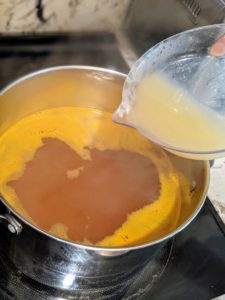
- Making sure that the turmeric and salt is well incorporated, pour the water mixture into the jar making sure all the vegetables are submerged.
- Let the mixture cool, cover and then refrigerate for at least 24 hours before eating. The longer it sits the better it tastes and the spicier it gets.
